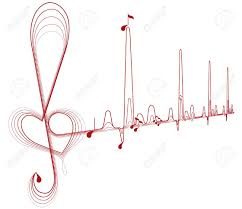
When teaching pupils about the pulse or rhythm in music is it important that they know the full meaning of what these words mean. A pulse is a steady beat which is played throughout the rhythm and rhythm can be described as long or short sounds within the music. To teach these terms to pupils, teachers should find more age appropriate ways to explain these terms to them. For example, as humans we all have a pulse and this is created by our heart beat therefore we could teach pupils about pulse by feeling their own in their bodies.
Within the music workshop, we looked at various rhythm patterns . Our first activity was to use shape syllables such as square and circle to clap out the rhythm. This allows pupils to create cross-curricular links with numeracy by involving shapes and it develops thir co-ordination by clapping out the rhythm whilst saying the shape name aloud. By allowing the pupils to join in with the clapping, they gain a sense of involvement and will enjoy joining in with music in the future (Bergmark and Western, 2018).
 cir-cle
cir-cle  square
square
Rhythm allows teachers to develop pupils skills as they are able to learn more than just music through musical activities. They are also gain literacy skills by learning the letter names on certain instruments, numeracy from counting how many beats there are and possibly history by learning where all the musical terms came from for example (Tervaniemi et al, 2018).
Using our creativity, we were introduced to printing within our art workshop today.

We were given the task to complete a print by using something that is making a statement. Our group chose to do make our statement based on embracing Mental Health. The statement we chose to use was “There is Strength in Your Softness”. This gave a powerful statement to those suffering from mental health to always remember that they are stronger than they feel. Here is our final product:

This activity was really fun to take part in as it was very satisfying to see how your print turned out in the end. The activity would be beneficial for teachers to do in class as it breaks up the routine of any basic art lesson and is something a bit more fun and creative. It also allows pupils to create their own statement on something that is meaningful to them. There is also cross curricular links with this activity as it allows pupils to develop their literacy skills through writing on their press( Watts et al, 2007).
Overall, I have gained knowledge on both rhythym and printing. By allowing pupils to experiment with music, it allows them to develop better knowledge of music before leaving Primary School for Secondary School. As teachers, it is aso important that we break the rountine in our planning and do something fun with our pupils by involving the Arts!
REFERENCES
Bergmark, U and Western, S. (2018) Student participation within teacher education: emphasising democratic values, engagement and learning for a future profession. Journal of Higher Education Research and Development. [Abstract, Online] Vol.37(7), pg 1352-1365. Available: https://www.tandfonline.com/doi/full/10.1080/07294360.2018.1484708 [Accessed: 15th October 2019].
Tervaniemi, M. Tao, S and Huotilainen, M. (2018) Promises of Music in Education? [Online] Available: https://www.frontiersin.org/articles/10.3389/feduc.2018.00074/full [Accessed: 15th October 2019].
Watts, R. Cox, S. McAuliffe, D. Heme, S. (2007) Teaching Art and Design 3-11. (Reaching the Standards). London: Continuum International Publishing.
